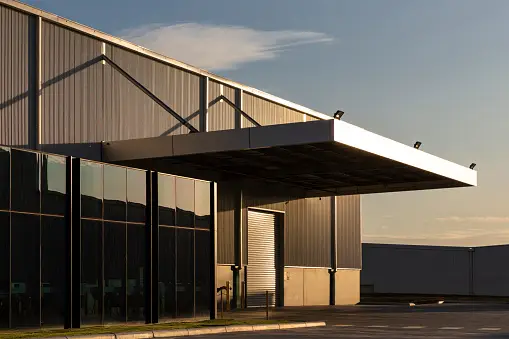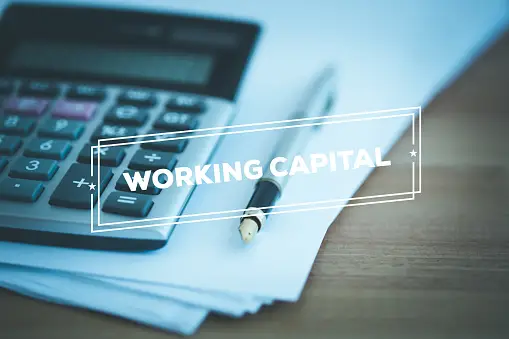
by speedadmin | Jul 25, 2023 | Blog
Launching a startup business can be an exciting and rewarding experience, but it’s also one of the most challenging endeavors you can undertake. It requires careful planning, hard work, and dedication to succeed. But if you have the right strategy in place and follow through with it, launching your startup can be a success.
Everything Starts with a Business Plan
The first step to launching a successful startup is to create a business plan. This document outlines the goals and objectives of your startup, market analysis, financial projections, and more. It also serves as a roadmap for you and potential investors or lenders. Take the time to research your target industry and develop an effective strategy that will help you reach your goals.
Secure Funding
Once you have a business plan in place, the next step is to find investors or other funding sources to get your startup off the ground. Reach out to family and friends, venture capitalists, angel investors, crowdfunding platforms, and even government grants if available. It’s important to have a clear idea of how much money you need to launch and operate your startup before reaching out for funding.
Marketing
Once you’ve secured the necessary financing, it’s time to focus on marketing and getting the word out about your product or service. Develop an effective strategy that utilizes social media, SEO, content marketing, pay-per-click advertising and any other channels that fit your budget and target audience. Use data from analytics to refine your marketing efforts and identify areas for improvement.
Growth Opportunities
Finally, don’t forget about post-launch growth. Successful startups are constantly evaluating their operations and making changes to improve performance. Identify areas of opportunity within the business and make sure you are investing time, money and resources into making them happen. By following these tips your startup can have a successful launch and continue to flourish in the years to come. Speed Funding offers a wide range of solutions to help you launch your startup – from small business loans to working capital, lines of credit, equipment, and more. Contact our offices today to turn your entrepreneurial dream into a reality.

by speedadmin | Jul 18, 2023 | Blog
Investing in industrial properties can be a great way to expand your portfolio and generate long-term income. Industrial properties are often less expensive than residential or commercial investments, and they typically provide higher returns with lower risk. Additionally, these types of investments tend to appreciate faster than other forms of real estate. This makes them an attractive option for investors who want to diversify their holdings while still reaping the benefits of owning real estate assets. In this blog post, we will explore some of the advantages that come with investing in industrial properties.
Higher Return Potential
One major advantage of investing in industrial properties is the potential for higher returns. Industrial investments often come with leases that are longer and more secure than residential or commercial leases, meaning investors can generally expect higher yields from their investments. Industrial properties also tend to appreciate quickly, providing good capital growth opportunities for investors.
Lower Risk
Another benefit of industrial property investments is the lower risk. Since industrial buildings are often built on larger plots of land and away from residential areas, they also tend to be less affected by changes in the local housing market. This means that investors can rely on a more consistent stream of income from their properties regardless of any fluctuations in the real estate market.
Additional Benefits
Finally, industrial properties can also offer other benefits to investors. For example, some industrial investments may include access to valuable infrastructure or commercial facilities such as ports, railways, and airports. This can be a huge advantage for businesses that need to quickly transport goods from one area to another. Additionally, some industrial areas may offer tax incentives for businesses looking to set up shop, making them an attractive option for investors looking to minimize their costs.
Investing in industrial properties can be a great way to diversify your real estate portfolio and generate long-term income. With lower risk and higher returns than other types of investments, industrial properties offer an excellent opportunity for savvy investors who want to maximize their profits. Contact Speed Funding today to get the financing you need to expand your portfolio with industrial properties.

by speedadmin | Jul 14, 2023 | Blog
Every commercial venture must have an online presence. While social media helps, a stunning internet domain remains imperative. Startup visionaries often lack money for hiring a team of web development professionals. Those with enough cash might want to avoid the expense by tackling the project themselves. In both instances, recommended methods deliver superior results. Here are a few suggestions to guide your site-building efforts.
Plan Everything
Like with running a venture, positive results don’t just happen. Avoiding pitfalls and creating an effective page demand thinking ahead. Just as you should write a business plan before opening your doors, work out every aspect of your website ahead of diving into the building stage. Start by identifying what message you intend to convey. Then, focus on your design. Think carefully about colors and graphical style. Review your intentions with an outside party that can help identify weak spots; major adjustments are much easier during the concept phase.
Stay Simple
As the saying goes, less is more. People will be browsing your site for specific information. Make sure they have no trouble getting what they seek. Simplify your language. Write at a 6th-grade level or lower. Avoid complex sentences and flowery language. Place navigational buttons in logical spots where users will not miss them. Go for a clean, powerful look that impresses visitors every time.
If you choose to code, keep lines as simple as possible for fewer bugs. Also, be sparing with graphics and animations. These elements can be problematic for customers with older devices or smaller screens.
Follow Others
Examine the domains of competitors. Review what they’re doing, and take stock of what elements they get right. Maybe you notice how much impact a particular splash page has. Create one that outdoes it. Perhaps a user-based photo section is attracting lots of traffic. Why not incorporate one into yours? There’s no reason for reinventing the wheel. Begin with what works, and then figure out improvements.
Test Rigorously
Before going live, allow others to comb over what you’ve created. The feedback they deliver could prevent a major headache. Be diligent about checking every link; those that lead to error pages leave a bad impression. See how your site looks when you access it through different electronics, and make adjustments as necessary. Provide a token of gratitude in exchange for consumers giving you their honest opinions.
These web development suggestions should put you on the path to stunning results. Incorporate them when composing your business site.

by speedadmin | Jul 11, 2023 | Blog
When it comes to taking out a loan or other type of financing, business owners must decide between fixed and variable interest rates. The choice has significant implications for the cost of borrowing money and repayment terms. Understanding both types of interest rates is essential for making an informed decision that best suits your financial needs. In this blog post, we will discuss what business owners should know about fixed vs variable interest rates so they can make the most informed decision possible.
Fixed Interest Rates
Fixed interest rates are set at a predetermined rate that never changes over the life of the loan. This rate is usually higher than variable interest rates, but borrowers will know exactly what their monthly payments will be over the entire term. Fixed interest rates provide more stability for those who don’t want to risk having their payments increase due to market volatility.
Variable Interest Rates
Variable interest rates, on the other hand, are based on a benchmark rate such as the prime rate or LIBOR. These rates can fluctuate over the life of the loan, so borrowers have no way of predicting what their payments may be in the future. This makes variable interest rates more unpredictable but also potentially less expensive than fixed interest rates.
Before you decide which type of rate is right for you, consider your own cash flow needs. If you don’t have the financial resources to handle a potential increase in payments, then a fixed interest rate might be your best bet. On the other hand, if you are comfortable with some level of risk and can handle an unexpected increase in payments, then a variable interest rate might be the way to go.
Whatever your decision may be, it’s always a good idea to speak with a financial advisor before you make any decisions about taking out financing for your business. A professional can help you assess your individual situation and choose which type of interest rate is best for your specific needs. With the right advice, you can make an informed decision that will help you save money and keep your business running smoothly. Speed Funding offers business solutions with both fixed and variable interest rates. Contact our team today to get business financing tailored to your needs.

by speedadmin | Jul 5, 2023 | Blog
It is important for businesses of all sizes to understand how to manage their working capital, as it plays a major role in the overall financial health and stability of the company. Working capital is defined as current assets minus current liabilities, and can be used to help determine if a business has enough resources available to cover its short-term debts. There are three main types of working capital: permanent, seasonal, and variable. In this blog post, we’ll discuss each type in detail so that you have a better understanding of which one best suits your business’s needs.
Permanent Working Capital
Permanent working capital is the amount of money that a business needs to remain operational over time. This type of capital refers to those funds which are always needed by the company, regardless of any changes in its operating environment. Examples include cash reserves, accounts receivable, inventory and other current assets that can be sold or used as collateral to pay off short-term liabilities.
Seasonal Working Capital
Seasonal working capital refers to the additional funds that a business needs in order to accommodate changes in its operating environment. For example, businesses that operate seasonally may require more cash flow during certain times of the year in order to cover their expenses during those periods. On the other hand, businesses that operate all year round may need additional working capital during certain times of the year to accommodate an increase in sales.
Variable Working Capital
Variable working capital is the amount of funds a business needs to meet its short-term obligations or take advantage of opportunities. This type of working capital is typically used for investments, new projects and other activities that can help the business grow. Businesses can access variable working capital by borrowing from a traditional lender or investing in stocks or bonds.
By understanding the different types of working capital available to them, businesses of all sizes will be able to better manage their finances and ensure long-term success. Contact Speed Funding today to learn about our working capital solutions for businesses.





